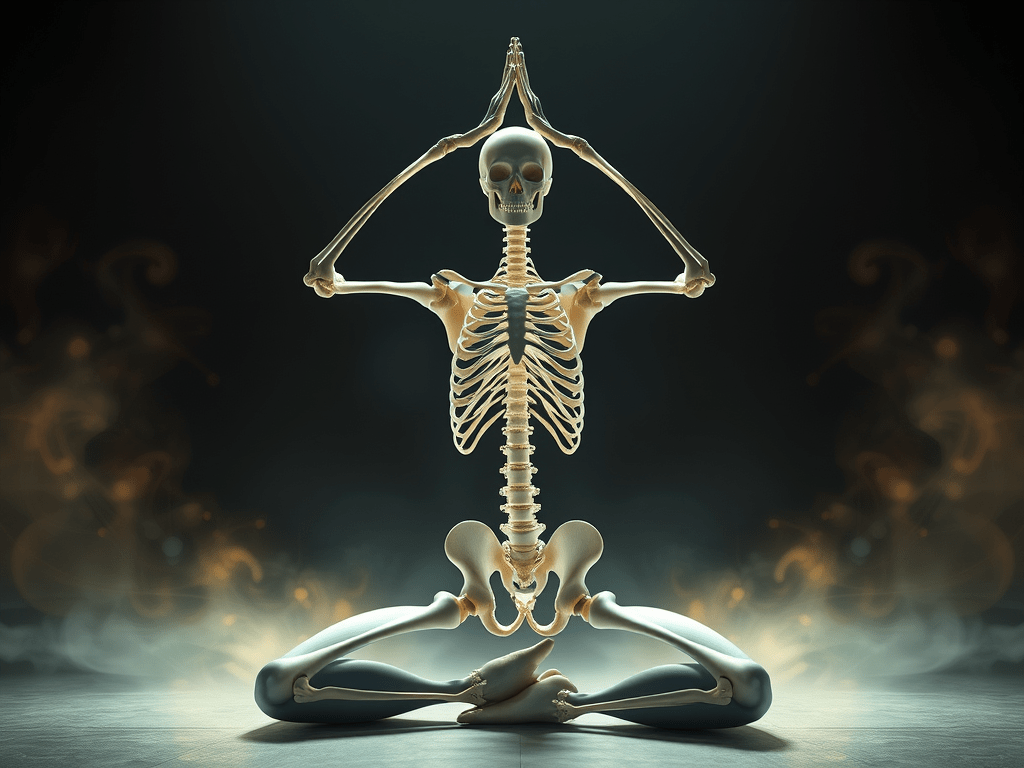The human skeletal system is a masterpiece of divine craftsmanship. With 206 bones providing structure, protection, and movement, our bones serve as the framework of the body—allowing us to walk, stretch, and worship through movement. Just as our faith provides a foundation for our spiritual life, our bones provide the foundation for our physical being. When we consider how intricately God designed the human body, it’s awe-inspiring to realize how each element—whether muscle, bone, or tendon—works together to create balance, mobility, and health.
The Body’s Foundation: Fearfully and Wonderfully Made
In Psalm 139:14, the psalmist declares, “I praise you because I am fearfully and wonderfully made; your works are wonderful, I know that full well.” This verse is a beautiful reminder that God has intricately woven every part of our bodies, including our skeletal system, with purpose. Each bone, joint, and ligament plays a role in keeping us upright, stable, and capable of movement. The human skeleton is not only a marvel of nature but a reflection of God’s divine intelligence. Through our bones, we are given the ability to move, carry out His work, and glorify Him.
The skeleton provides a structure that can endure the pressures of life—literally. Bones support weight, absorb shock, and protect essential organs like the heart, lungs, and brain. This physical framework can be seen as symbolic of our faith in Christ, which upholds us spiritually through all of life’s challenges.
The Role of the Skeletal System
The skeletal system serves several essential functions in the body:
- Support: The skeleton acts as the body’s framework, supporting the weight of the body and giving us our shape and structure.
- Protection: Bones protect the body’s vital organs. For instance, the skull houses and shields the brain, while the ribcage offers protection to the heart and lungs.
- Movement: The bones act as levers for muscles, allowing us to perform all manner of movements, from lifting objects to performing yoga poses.
- Mineral Storage: Our bones store important minerals like calcium and phosphorus, which are essential for many bodily functions, including nerve transmission and muscle contraction.
- Blood Cell Production: Bone marrow is the site of blood cell production. It creates red blood cells that carry oxygen and white blood cells that fight infections.
When we engage in yoga, we engage this intricate system, improving the function of the bones and joints while increasing the flow of nutrients that nourish them.
Yoga and Bone Health
Yoga has long been lauded for its ability to increase flexibility and strength. However, one of its lesser-discussed benefits is its ability to strengthen the skeletal system. Here’s how:
- Bone Density: Yoga can enhance bone density, particularly in weight-bearing poses, which is vital for maintaining bone health, especially as we age. Weight-bearing exercises stimulate the bones to retain and increase their density. This can be especially helpful in preventing conditions such as osteoporosis.
- Posture and Alignment: Practicing yoga improves posture by promoting proper alignment, which helps distribute weight more evenly across the body. When we maintain proper alignment in daily life, it can reduce stress on our bones and joints and prevent injury.
- Joint Health: Flexibility and mobility exercises in yoga reduce stiffness in the joints, increasing their range of motion and overall health. With regular practice, yoga promotes the flow of synovial fluid in the joints, which lubricates them and keeps them healthy.
- Balance and Stability: Yoga improves balance, reducing the risk of falls, which is especially important as we age. Many poses, such as the Tree Pose (Vrksasana), strengthen the bones in the feet and lower legs while also improving coordination and stability.
In essence, yoga helps to restore and maintain a healthy skeletal system by encouraging functional movement patterns, proper posture, and bone-strengthening activities.
Biblical Encouragement for Strength
The Bible offers plenty of wisdom on the importance of maintaining strength in the body. Proverbs 3:7-8 states, “Do not be wise in your own eyes; fear the Lord and shun evil. This will bring health to your body and nourishment to your bones.” Here, we see that strength for our bones comes not only through physical movement but through reverence and respect for God’s design. When we honor the body God has given us—by practicing physical care through movement, rest, and nutrition—we honor Him.
Furthermore, in 1 Corinthians 6:19-20, the apostle Paul writes, “Do you not know that your bodies are temples of the Holy Spirit, who is in you, whom you have received from God? You are not your own; you were bought at a price. Therefore honor God with your bodies.” Taking care of our bones and ensuring that we are physically strong is not just a matter of health; it is an act of honoring God. We are called to respect our bodies and use them in service to Him. Yoga, with its emphasis on body awareness and alignment, becomes a powerful tool for achieving this.
Key Yoga Poses for Bone Strength
Here are several key yoga poses that can help promote bone strength:
- Tadasana (Mountain Pose): This foundational pose helps improve posture and align the spine. By standing tall, rooting into the feet, and stretching upward, we engage and strengthen the bones of the legs, hips, and spine.
- Virabhadrasana (Warrior Pose): This pose strengthens the bones in the legs, hips, and spine while also improving stability. The deep lunge and open chest encourage both strength and flexibility.
- Utkatasana (Chair Pose): Utkatasana works the lower body, building strength in the thighs, knees, and hips. Holding the pose activates bones in the legs and lower back, promoting bone density in these areas.
- Trikonasana (Triangle Pose): This pose stretches the spine and hips while strengthening the legs. The deep stretch and strengthening action in the legs encourage better bone health and flexibility.
- Bhujangasana (Cobra Pose): Cobra pose helps to strengthen the spine and the bones of the back. It promotes flexibility in the lower back while gently stretching the chest and shoulders.
- Vrksasana (Tree Pose): Tree pose enhances balance and strengthens bones in the legs, hips, and feet. It’s a powerful posture for cultivating stability and awareness in the body, helping reduce the risk of falls.
- Setu Bandhasana (Bridge Pose): This pose strengthens the lower back, hips, and legs, while also stimulating the bones in the spine and pelvis. It also helps to open the chest and improve alignment.
- Dhanurasana (Bow Pose): This pose promotes strength and flexibility in the spine and core, while simultaneously opening up the chest and improving posture.
Strengthening the Temple
God has given us a physical body as a vessel for His Spirit. We are called to honor Him with our bodies and take care of them so we can serve His will. Strengthening our bones through yoga is an act of gratitude for the temple He has entrusted to us. As we engage in physical practices that strengthen our skeletal system, we honor God’s design and the health He desires for us.
Conclusion
The skeletal system is a gift from God, providing the structure we need to move, serve, and worship. Through yoga and intentional movement, we can strengthen our bodies and honor God’s temple, allowing us to live active, faithful lives. By aligning our physical care with biblical principles, we grow stronger in our faith and more capable of fulfilling the purpose He has for us.
Disclaimer: This article is for informational purposes only and is not intended to diagnose, treat, or provide medical advice. Always consult a healthcare professional before beginning a new exercise routine.
This article may contain affiliate links, which means we may earn a small commission if you make a purchase through them. This helps support our work at no additional cost to you.

